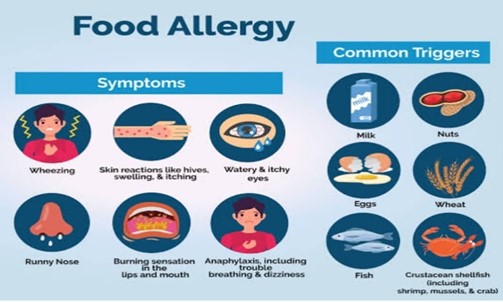No products in the cart.
Managing food allergies in children

Dr. Priya Shivalli
What are the symptoms of food allergy/ intolerance in children? How can we prevent and treat them?
— Meera Jeet, Bangalore
Food allergy is an abnormal immune mediated response of the body to certain foods such as milk, peanuts, egg, tree nuts, fish, shellfish, wheat, soy etc. Even a small amount of the allergy causing food can trigger reactionary symptoms, affecting the skin, respiratory, digestive and cardiovascular system. Some allergies could be life threatening.
On the other hand, food intolerance is not an immune mediated reaction. It only affects the digestive system and isn’t fatal.
Symptoms of food allergy in children manifest within a few minutes to two hours after eating the allergy-inducing food. Common symptoms include:
- Tingling or itching in the mouth
- Hives or urticarial
- Swelling of the lips, face, tongue, throat and other body parts
- Nasal congestion or running nose, difficulty in breathing, chest discomfort and wheezing
- Abdominal pain, cramps, diarrhoea, nausea and vomiting
- Dizziness, light headedness and fainting
- Anaphylaxis — a multi-system allergic reaction — which can be fatal if not treated immediately.
Here are some ways to manage food allergies in
children:
- Discuss and learn to recognise symptoms of an allergic reaction from your family doctor.
- Get an allergy test (skin prick test)
- After diagnosis, focus on including safe foods in your child’s diet
- Read food labels carefully and avoid food products that contain allergens
- Teach your child to recognise the allergen and avoid eating foods that may contain it
- Communicate and educate your child’s school teacher and close friends about her allergies
- Create an emergency plan. In case of anaphylaxis, learn how to administer an epinephrine injection
- Consult a doctor to treat your child’s food allergies.
 Please recommend supplements or vitamins for infants and toddlers — I have a three-year-old son and an eight-month-old daughter.
Please recommend supplements or vitamins for infants and toddlers — I have a three-year-old son and an eight-month-old daughter.
— Rhema Khanna, Delhi
In the first two years of life, the brain develops at a rapid pace. Breast milk is the best and most complete food for the first six months of a child’s life. It promotes emotional and psychological bonding and confers lifelong immunity by providing antibodies. Infants need Vitamin D for healthy bones growth. Low Vitamin D causes rickets, softening and weakness of bones. Sun exposure of infants is an important source of Vitamin D but may not be always practical. A full-term normal baby needs Vitamin D3 400 IU/day during the first 12 months. A premature baby may additionally need calcium, phosphorous and iron supplements. From the seventh month onwards, along with breast milk start including some complementary foods.
Children should consume protein-rich foods, nuts, fresh vegetables and fruits, milk and milk products. For your three-year-old, I recommend a nutritious balanced diet, adequate sleep, regular exercise and zero caffeinated or carbonated drinks. Moreover Anemia Mukht Bharat recommends biweekly iron supplements for all children between six months and five years.
(Dr. Priya Shivalli is a consultant neonatologist and pediatrician, NSSH, Bengaluru, and executive board member of the Indian Academy of Pediatrics)















Add comment